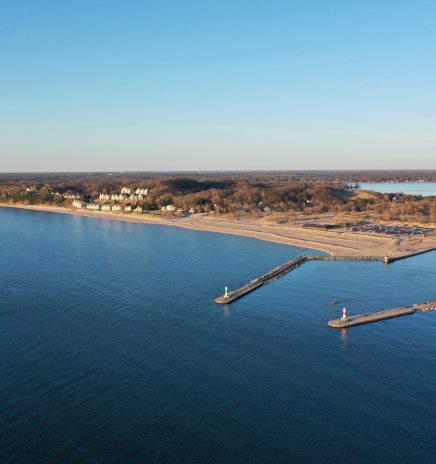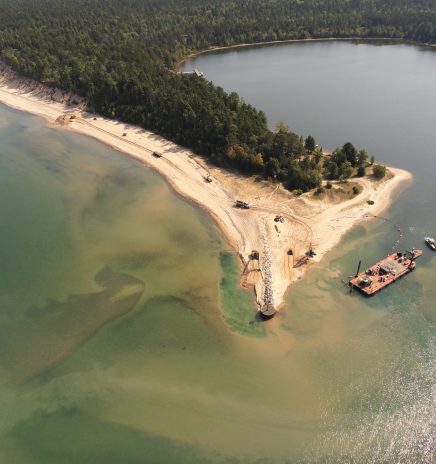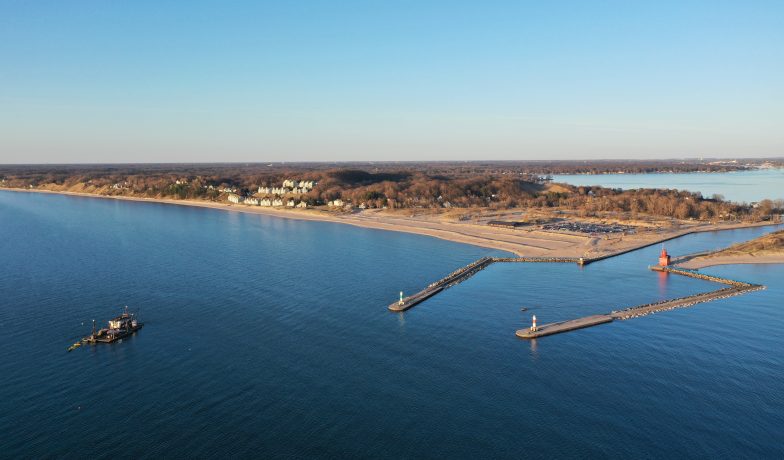USACE Begins Dredging at Holland Harbor
The U.S. Corps of Engineers, Detroit District will start dredging the entrance to Holland Harbor as early as Thursday, April 24 to remove shoaling across the federal channel.
Surveys indicate a shoal formed in the winter months across the entrance to the harbor that could potentially impact commercial dredging if not addressed.
Holland Harbor was scheduled for dredging in the 2025 maintenance work plan to maintain the Congressionally authorized depth of the federal channel. King Co. Inc., based in Holland, will dredge about 12,400 cubic yards of sediment hydraulically. The project will cost $344,480 out of a three-project contract that also includes Grand Haven and St. Joseph Harbors.
Holland Harbor is considered a deep draft commercial harbor with an authorized federal channel depth of 23 feet at the entrance. If ships are unable to draft at their full capability, commercial traffic is forced to take less freight or “light load.” A loss of 4-to-5 feet in channel depth would result in a loss of about $1.4 to $1.9 million per year to the shipping industry at Holland Harbor due to light loading, according to Corps of Engineers’ Great Lakes – System Analysis of Navigation Depths (GL-SAND).
Dredged sediment will be placed south of Holland Harbor on the nearshore lake bottom 8 to 12 feet deep. The placement allows the beach to be nourished – a replacement of eroded sediment – without the impacts of heavy machinery or pipes onshore.
The Michigan Department of Environment, Great Lakes and Energy previously approved a water quality certification for sediment to be placed in the area with a Section 401 water quality certification.

USACE Begins Dredging at Holland Harbor
The U.S. Corps of Engineers, Detroit District will start dredging the entrance to Holland Harbor as early as Thursday, April 24 to remove shoaling across the federal channel. Surveys indicate... Read More

Experimental Dredging for U.P. Harbor
The U.S. Army Corps of Engineers, Detroit District and Engineer Research and Development Center(ERDC) in partnership with the U.S. Navy removed more than 25,000 cubic yards of material from Little... Read More



